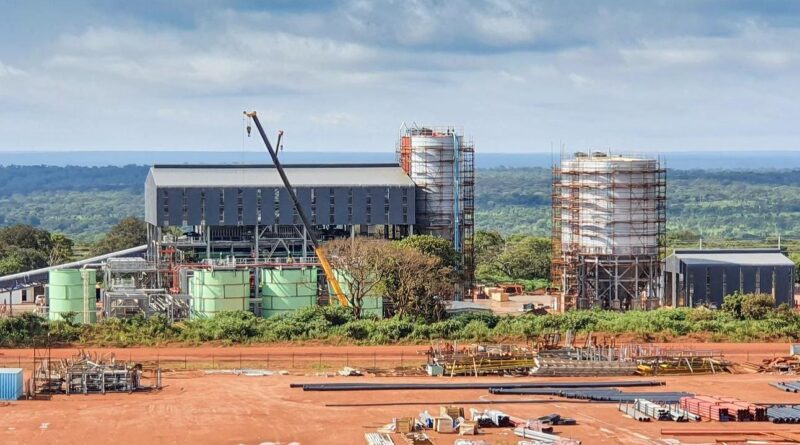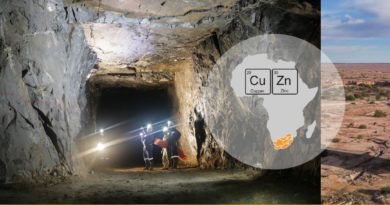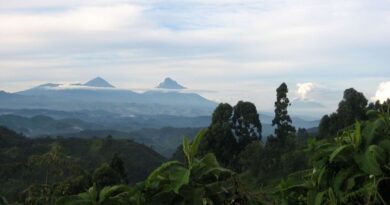Kamoa-Kakula Project: Review of activities
TORONTO, Canada ‒ The Kamoa-Kakula Project, 39.6%-owned by Ivanhoe Mines in the Democratic Republic of Congo, is a joint venture between Ivanhoe Mines and Zijin Mining, which has been independently ranked as the world’s fourth-largest copper deposit by international mining consultant Wood Mackenzie.
The project is approximately 25 kilometres west of the town of Kolwezi and about 270 kilometres west of Lubumbashi.
Ivanhoe sold a 49.5% share interest in Kamoa Holding Limited (Kamoa Holding) to Zijin Mining in December 2015 for an aggregate consideration of $412 million. In addition, Ivanhoe sold a 1% share interest in Kamoa Holding to privately-owned Crystal River for $8.32 million – which Crystal River will pay through a non-interest-bearing, 10-year promissory note.
Since the conclusion of the Zijin transaction in December 2015, each shareholder has been required to fund expenditures at the Kamoa-Kakula Project in an amount equivalent to its proportionate shareholding interest in Kamoa Holding.
A 5%, non-dilutable interest in the Kamoa-Kakula Project was transferred to the DRC government on September 11, 2012, for no consideration, pursuant to the 2002 DRC mining code.
Following the signing of an agreement with the DRC government in November 2016, in which an additional 15% interest in the Kamoa-Kakula Project was transferred to the DRC government, Ivanhoe and Zijin Mining now each hold an indirect 39.6% interest in the Kamoa-Kakula Project, Crystal River holds an indirect 0.8% interest and the DRC government holds a direct 20% interest. Kamoa Holding holds an 80% interest in the project.
At the end of 2020, the Kamoa-Kakula Project reached 2,618,438 work hours free of a lost-time injury. The project continues to strive toward its workplace objective of zero harm to all employees and contractors.
Kamoa-Kakula continues to focus on prevention, preparation and mitigation in managing the risks associated with COVID-19. Large-scale testing, combined with focused preventative measures, ensures that positive cases are quickly identified, isolated and treated, with cross contamination kept to a minimum.
The Kakula 2020 definitive feasibility study evaluates the initial development of a 6.0-Mtpa underground mine and surface processing complex at the Kakula Deposit with a capacity of 7.6 Mtpa, built in two modules of 3.8 Mtpa, with the first already under advanced construction.
Highlights of the Kakula 2020 DFS, initial 6-Mtpa mine at Kakula, include:
- The Kakula 2020 DFS evaluates the development of a stage one, 6.0-Mtpa underground mine with a surface processing complex at the Kakula Deposit with a capacity of 7.6 Mtpa, built in two modules of 3.8 Mtpa, with the first already under advanced construction. For this option, the DFS envisages an average annual production rate of 284,000 tonnes of copper at a mine-site cash cost of $0.52 per pound (lb) copper and total cash cost of $1.16/lb copper for the first 10 years of operations, and annual copper production of up to 366,000 tonnes by year four.
- Remaining initial capital cost of $0.65 billion for this option would result in an after-tax net present value at an 8% discount rate (NPV8%) of $5.5 billion.
- The internal rate of return of 77.0% and project payback period of 2.3 years confirm the compelling economics for the Kamoa-Kakula Project’s stage one of production.
- Kakula benefits from an ultra-high feed grade averaging 6.6% copper over the first five years of operations, and 5.2% copper on average over a 21-year mine life.
Highlights of the modular, integrated, expanded development option potential for the Kakula and Kamoa deposits, mining a total of 19 Mtpa, with construction of a direct-to-blister smelter, include:
- The Kamoa-Kakula 2020 PEA presents an additional development option of a multi-stage, sequential operation on Kamoa-Kakula’s high-grade copper deposits.
- Initial production from the Kakula Mine at a rate of 6.0 Mtpa, followed by subsequent, separate underground mining operations at the nearby Kansoko, Kakula West and Kamoa North mines, along with the construction of a direct-to-blister smelter. The Kamoa North Area comprises five separate mines that will be developed as resources are mined out elsewhere, to maintain the production rate at up to 19 Mtpa, with an overall life in excess of 40 years.
- For the integrated, 19-Mtpa, multi-stage development, the PEA envisages $0.7 billion in remaining initial capital costs. Future expansion at the Kansoko Mine, Kakula West Mine and Kamoa North mines would be funded by cash flows from the Kakula Mine, resulting in an after-tax net present value at an 8% discount rate (NPV8%) of $11.1 billion, an internal rate of return of 56.2%, and a payback period of 3.6 years.
- Under this approach, the PEA also contemplates the construction of a direct-to-blister copper smelter at the Kakula plant site with a capacity to process one million tonnes of copper concentrate per annum to be funded from internal cash flows. This would be completed in year five of operations, achieving significant savings in treatment charges and transportation costs.
- The 19-Mtpa scenario shows the potential for average annual production of 501,000 tonnes of copper at a total cash cost of $1.07/lb copper during the first 10 years of operations, and production of 805,000 tonnes of copper by year eight.
- At this future production rate, Kamoa-Kakula would rank as the world’s second largest copper mine.
The capital costs incurred by the Kamoa-Kakula joint venture in 2019 amounted to $309.1 million, of which $125.2 million was spent on the Kakula declines and mine development. A further capital cost of $643 million, which includes the costs allocated to the pre-production ore stockpiles, has been incurred in 2020.
Ivanhoe’s share of the capital costs incurred in 2020 was $318 million, representing its share of approximately 40% of the initial capital costs, plus its share of capital associated with the 20% carried interest owned by the Government of the DRC, which will be repaid through future cash flows from the project. Ivanhoe has budgeted $154 million for its proportionate funding of approximately 50% for the Kamoa-Kakula Project for 2021.
As of December 31, 2020, the joint venture had an estimated $336 million of capital costs remaining until initial production. Ivanhoe expects that it will have sufficient cash resources, or financing options available, to cover its proportionate share of the remaining initial capital costs.




